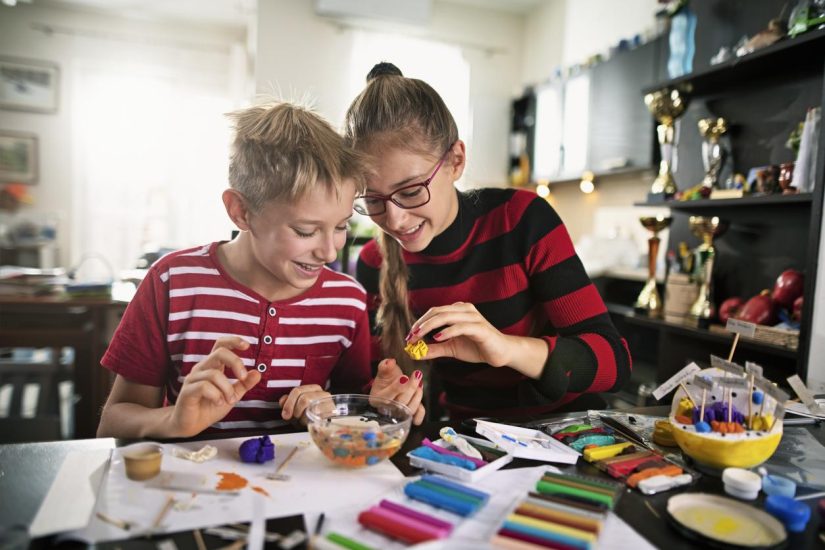Science, technology, engineering and mathematics (STEM) skills are becoming increasingly important for future careers. According to the Department of Education, Skills and Employment, ‘The gap between the knowledge generated in the education system and the skills demanded by employers and individuals is widening. Overcoming these limitations requires a priority focus on STEM.’
Children are naturally curious about the worlhttps://www.dese.gov.au/australian-curriculum/national-stem-education-resources-toolkit/introductory-material/why-stem-importantd around them and how it works. Sadly, this curiosity tends to fade as they get older. One of the best ways to help students develop the critical thinking, creativity and problem-solving skills needed for the future, is to keep them engaged with STEM subjects at home.
These fun activities will help kids develop vital STEM skills.
Make a Balance Scale
This simple educational activity requires only a plastic coat hanger, some string and two cups. Kids hang the cups from each end of the hanger and then experiment with weighing different items.
Ask your child to make predictions about how much things weigh compared to each other. For example, how many LEGO pieces will equal the weight of another small toy.
Create Magnetic Slime
Most kids love making slime, and many are already experts at it. To take it to the next level, get them to add some iron oxide powder. (This safe material can be purchased cheaply online). Keep adding glue or liquid starch to get the consistency right.
Once you’ve finished mixing, use some neodymium magnets to manipulate the slime. Kids will want to show all their friends this great trick. They’ll also want to know how it works, giving you an opportunity to do some research together.
Transform Milk Into Plastic
All you need to do to turn milk into plastic in a few minutes is some milk and vinegar. Ask your child to take one cup of milk and heat it in the microwave for 1.5 minutes. Stir in four tablespoons of vinegar. As the acid starts to break down the protein in the milk, it will begin to clump together. Keep stirring for about a minute and then strain any remaining milk out through a strainer.
Push on the clumps in the strainer to remove moisture, then transfer to a paper towel and keep pushing until all liquid is gone. The plastic can then be coloured and shaped into whatever form you want. Kids will be amazed to learn that up until 1945 milk was used to make a whole range of plastic items, including buttons, beads and jewellery.
Build a Lemon Battery
All you need to make a battery is a lemon, some copper wire, wire clippers, sandpaper and a steel paper clip. Kids will need help to strip about 6 centimetres of insulation off the copper wire and then cut this section off. Straighten the paper clip, cutting it to the same length as the stripped copper wire. Smooth out any rough spots on the paperclip. Loosen up the juice inside the lemon by rolling it on a flat surface. The juice is what triggers the chemical reaction.
Stick the copper wire about 2.5 centimetres into the lemon. Stick the paperclip in less than a centimetre from the copper wire, ensuring they don’t touch. When kids touch their tongue to both wires at once, they’ll notice an electrical charge and a metallic taste. With just a few more steps you can use the lemon battery to power a light bulb.
Kids who are engaged with STEM at home are more likely to excel in these subjects at school.




